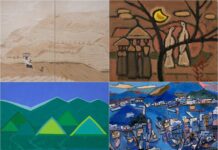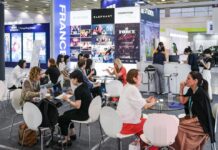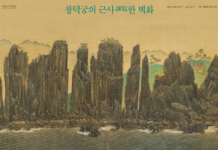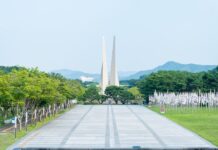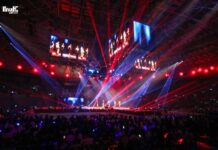Walking down an alleyway next to the former provincial government offices of Jeollanam-do (South Jeolla Province) along Geumnam-ro Street in Gwangju leads visitors to an underground city. A broad plaza is surrounded by a glass and steel building. The historic venue of the May 18 Gwangju Democratic Uprising in 1980 has now been reborn as the Asia Culture Center.
The Asia Culture Center (ACC) was unveiled to the public for the first time on Sept. 4. The ACC Archive & Research center, the ACC Creation gallery, the Art Theater and the ACC Children theater are now open to the public, but the Democratic Peace Exchange, still undergoing renovations, was excluded from the opening ceremony. Covering 135,000 square meters, the ACC is the biggest cultural complex in Korea and its final opening is scheduled for November.
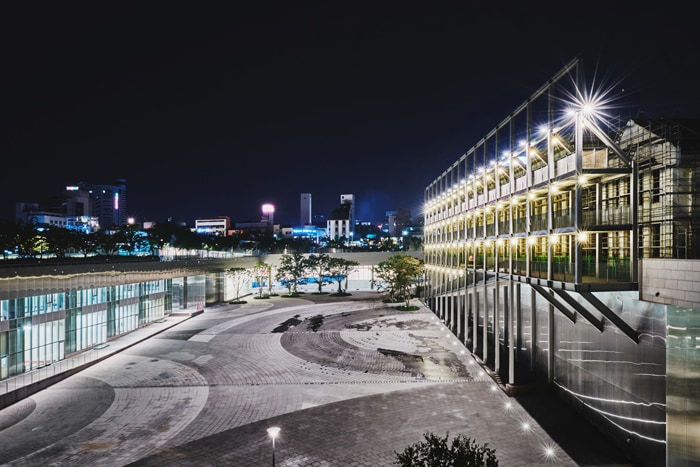
The Asia Culture Complex opens to the public on Sept. 4.
The ACC, for which architect Woo Kyu-sung’s “Forest of Light” was chosen as the winning design, first opened to the public since its groundbreaking ceremony in 2005. Historicity and authenticity were emphasized during its construction. Six buildings, including the former Jeollanam-do provincial offices, the main site of the May 18 Gwangju Democratic Uprising in 1980, have been preserved.
Ninety percent of the complex’s major buildings are located underground, as the surface was dug 25 meters down to create space for the complex. With around 70 windows installed on the ceiling, it does not feel like being underground. Bamboo groves outside the complex, wide grass fields and walking tracks built along the wooden decks create a park-like atmosphere.
To mark the public opening of the complex, there are now many trial programs underway at the ACC Archive & Research center, the ACC Creation gallery, the Art Theater and at the ACC Children theater. An exhibition showing 14 different subjects, ranging from design to modern architecture, to photographs by Asian artists and to the “Singapore Art Archive Project,” held to mark the 40th anniversary of Korea-Singapore diplomatic relations, are already attracting visitors. They will be able to see the architectural model of Woo Kyu-sung’s “Forest of Light” and the process of how the complex was built.
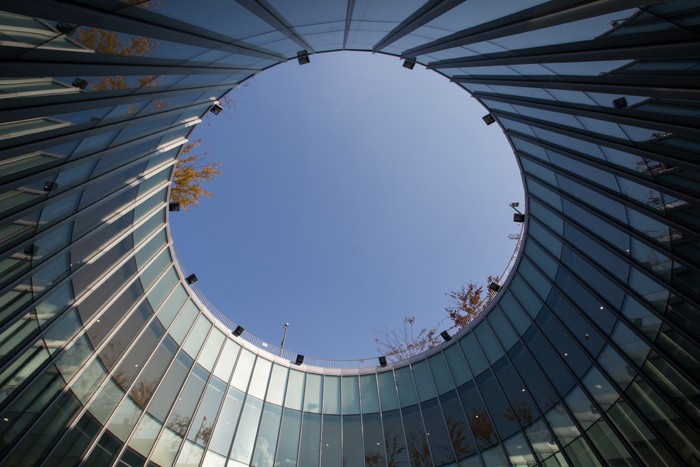
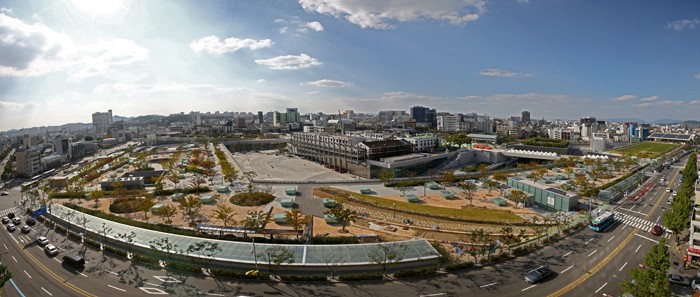
An aerial view of the Asia Culture Center.
“The Interrupted Survey: Fractured Modern Mythologies,” an exhibition at the ACC Creation gallery, delves into the mind of contemporary Asians. Renowned Asian artists took park in the exhibition, curated by Anselm Franke.
A total of 33 works produced by 29 Asian artists will be presented at the Art Theater. Twelve of them were either produced or co-produced at the theater.
Taiwanese director Tsai Ming-liang will present “The Monk from Tang Dynasty,” a performance inspired by Tang Dynasty monk Xuanzang (c. 602-664), narrating the process of asceticism. “Cemetery of Splendour,” Thai director Apichatpong Weerasethakul’s film that received a Palme D’Or at the Cannes Film Festival in 2010, will also be shown at the theater.
The 2015 Children’s Performing Arts Festival, consisting of 206 performances and parades, and 41 works from 11 nations, will be staged at the Asia Culture Center and at other venues around Gwangju. Various performances, including “Buchettino,” a visual and audio show, and other street shows will also be staged.
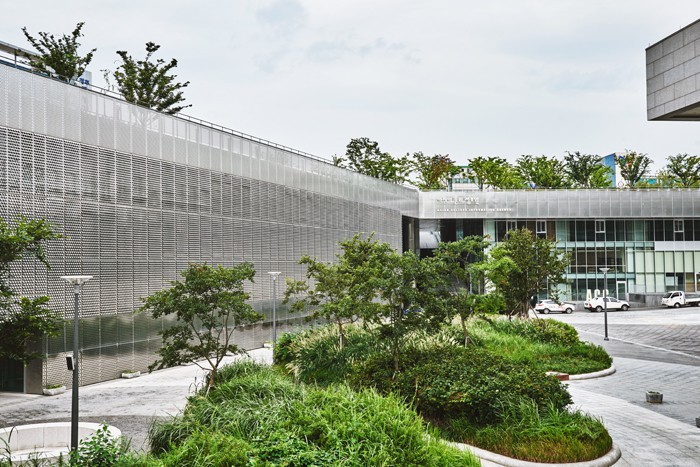
A majority of the buildings at the Asia Culture Center sits underground, but it does not feel like being underground due to the many windows on the ceiling and the gardens nearby.
There will be a guided tour of the ACC three times per day at 1 p.m., 2:30 p.m. and 4 p.m. For more information, please visit the Asia Culture Center’s homepage (www.acc.go.kr).
By Limb Jae-un
Korea.net Staff Writer
Photos courtesy of the Asia Culture Center
jun2@korea.kr


